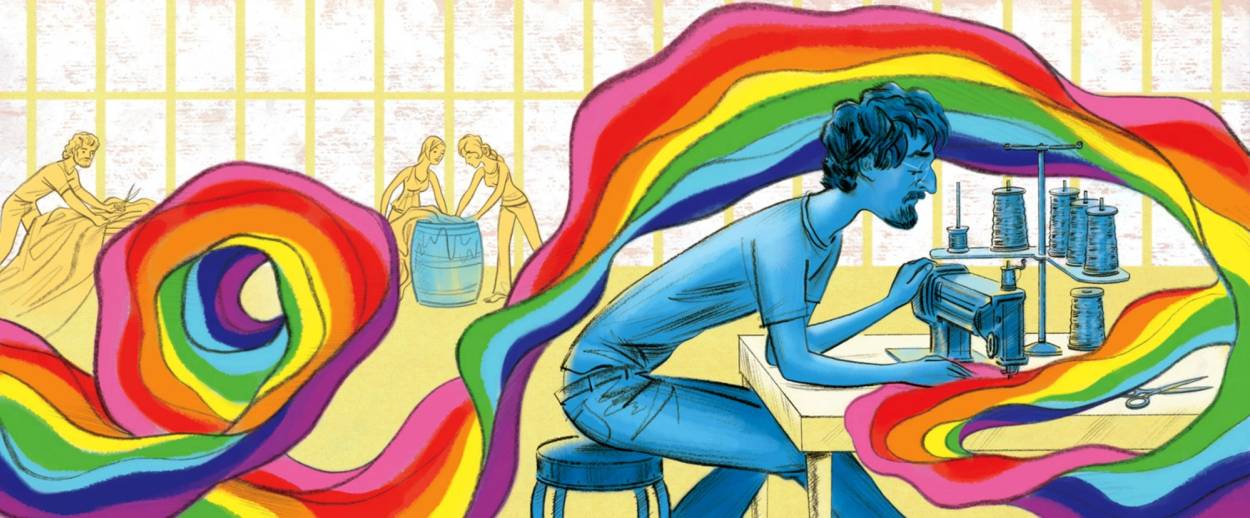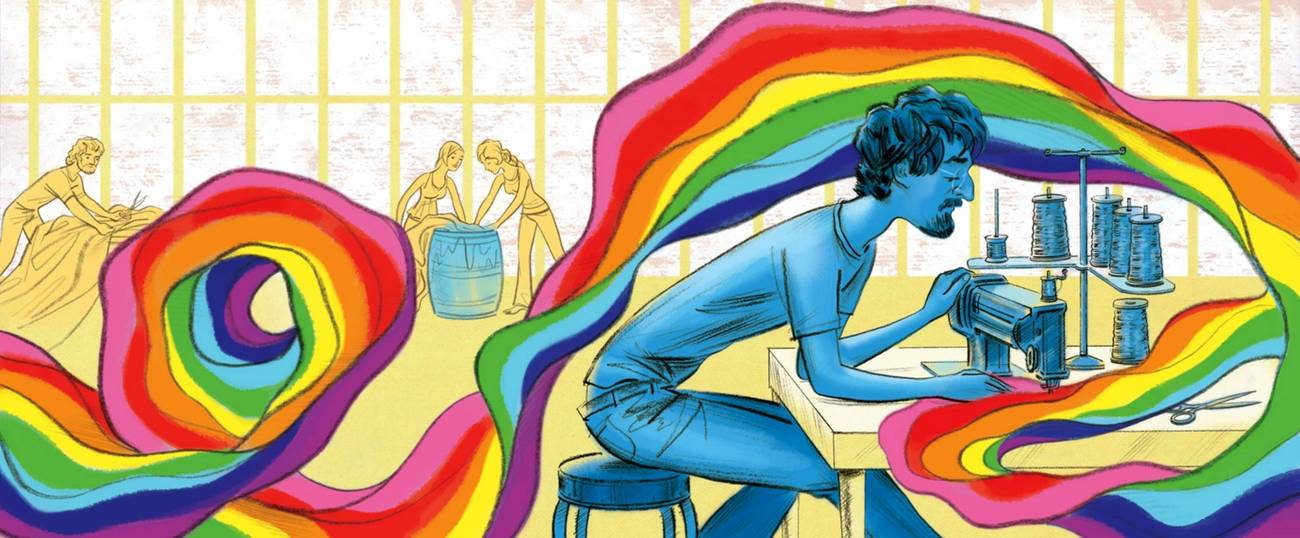A New Picture Book Helps Families Celebrate Harvey Milk and the Rainbow Flag
Today would’ve been the civil rights icon’s birthday, so why not take a moment to teach the young ones about his life and pursuit of justice?




Look, I’m sure scholar Lillian Faderman’s new book, Harvey Milk: His Lives and Death is very nice. Very smart. But does it have giant, brilliantly colored illustrations of a drag queen with a teeny purse, whorls of rainbow fabric, a surfer dude with a rainbow board, and a really cute schnauzer? I bet not.
You know what does? Pride: The Story of Harvey Milk and the Rainbow Flag, by Rob Sanders, delightfully illustrated by Steven Salerno. It tells Milk’s story through the story of the rainbow flag, first unfurled in San Francisco on June 25, 1978. Even a five-year-old (the publisher recommends the book for Kindergarten through Grade 3, but I think it would be a fine teaching tool for kids through fifth grade) can be inspired by Milk’s life and the continuing life of the flag. All kids—and grownups—can be uplifted by the book’s depiction of our collective potential to create positive change.
From the very first spread—showing young Harvey, in a blue and white Breton sailor top and bell bottoms, his characteristic curly hair looking fabulous, lying in a gorgeous green field that’s trippily embroidered with psychedelic floral swirls—Pride focuses on how one person’s dream of improving the world can become reality. The book’s language is simple, succinct and direct, a welcome change from the recent trend of wordy picture books.
Harvey dreamed that everyone—even gay people—would have equality.
He dreamed that he and his friends would be treated like everyone else.
He dreamed that one day, people would be able to live and love as they pleased.
We see Harvey speaking to unsympathetic crowds in his New York accent, winning elected office in 1977, planning marches to protest inequality. He realizes his marches need a symbol—and the page fills with familiar icons like recycling logo, the Red Cross, a musical clef, the dove of peace, an American flag. It’s a great opportunity for parents to talk with kids about the importance of branding, logos, and communication. Harvey approaches Gilbert Baker, who dips fabric into barrels of vivid dye. We see a huge, electric-bright flag waving in the foreground of a spread, with a delighted Harvey behind it, on the corner of Castro and Market Streets. Behind him, the city of San Francisco rises in a soft pastel mist. The flag’s message spreads and gains traction. But soon we see a looming newspaper with the headline: “Moscone, Milk killed.” The text explains that Harvey and the mayor of San Francisco were assassinated. “Their lives were taken by a man who did not think like Harvey, or feel like him, or love like him,” Sanders writes.
The next page shows a gorgeous parade of twinkling lights winding through the streets toward San Francisco’s city hall. “The flag did not fly on that dark, sad night,” the text reads. “Instead, thousands and thousands of people marched silently, carrying candles.” We still see the colors of the flag, though, in dots of bright light spiking the luminescent illustration like prisms. And as we know, the flag kept on keeping on, as did the fight for equality. We see the huge Pride parade in NYC in 1994, and the White House awash in rainbow light on June 26th, 2015. A clear, concise afterword explains the significance of that date. It also provides a timeline for Harvey’s life and for the flag, gives more detail on Gilbert Baker, offers resources for further reading and shows photos of the real Harvey and Gilbert and significant moments in LGBT history.
I do wish the book mentioned Harvey’s Jewishness, which Faderman’s book maintains imbued his identity and his fight for social justice despite his lack of religiosity. (Jewish parents may wish to fill in some of the blanks themselves. Do the work, people.) And I wish that Sanders had either followed up with an explanation of the evolution of the flag’s design—some of the colors changed, and the flag went from eight stripes to six—or left it out entirely. Nevertheless, the book is sweet, fun, deep and age-appropriate. And Salerno’s art is endlessly enticing: Pale psychedelic paisleys and vines wind through the backgrounds of many boldly colored pages; a lively, fashion-centric spread shows all kinds of people with rainbow flags – a cop! a Vietnam vet in a wheelchair! a surfer! a chic brown lady with natural hair and a kelly-green bag and a pink polka-dot dress! If I’m gonna quibble, it might have been nice to see a butch lesbian? But hey, it’s fine. This high-spirited, buoyant, touching book belongs on your family’s shelves.
Marjorie Ingall is a former columnist for Tablet, the author of Mamaleh Knows Best, and a frequent contributor to the New York Times Book Review.